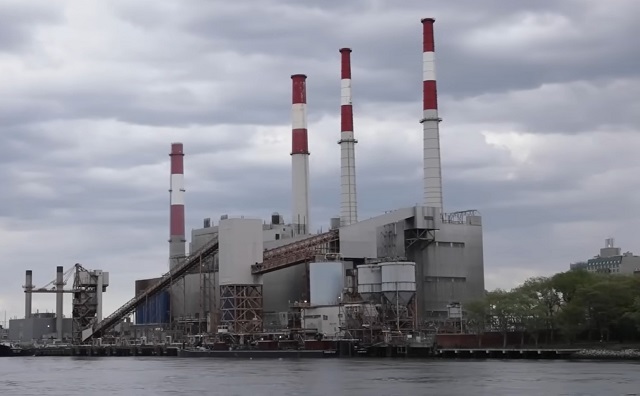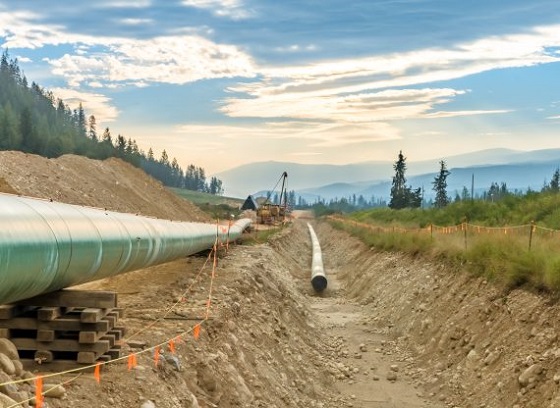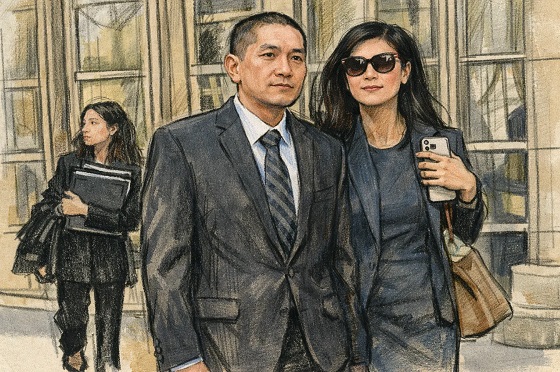Energy
Biden’s Mad War On Natural Gas Will Not End Well For Americans

 From the Daily Caller News Foundation
From the Daily Caller News Foundation
Even as the Biden administration’s regulatory agencies are moving to render the building of new natural gas power plants too costly to justify, a consensus has formed in the analyst community that the added power demands from AI will require a big expansion of natural gas generation to ensure grid stability.
Over a span of less than 20 days in April and May, Biden regulators at the Environmental Protection Agency(EPA) and the Federal Energy Regulatory Commission(FERC) published new regulations that, according to grid expert Robert Bryce, add more than 1 million words targeting natural gas to the federal register.
On April 25, the EPA finalized new power plant emission rules that will essentially force the retirement of America’s remaining coal-fired power plants by 2030 by rendering them too costly to continue operating. Most media reports focused on that aspect of the new regulations, which had been anticipated.
Reporters gave less attention to the fact that the new rules also constitute a clear effort to make it nearly impossible to finance and operate additional gas-fired power plants over the same time. The requirement that new gas plants be accompanied by costly carbon capture and storage (CCS) capability adds millions in additional costs and would also consume as much as 30% of the power generated by the plants, greatly diminishing their profitability. The fact that some operators have already tried and failed to add CCS to at least five such plants in the United States leads to an almost inevitable conclusion that this rule is intentionally structured to shut down the natural gas power industry in this country.
On May 13, the FERC rules added hundreds of thousands of more words targeting natural gas with its Order 1920. Where the EPA rules make it vastly more expensive to build and operate natural gas power plants, FERC Order 1920 makes it more costly and difficult to permit transmission lines needed to carry their electricity to market. FERC does this by discriminating between generation sources, streamlining and incentivizing permitting for power lines that are connected to wind and solar projects.
It is a regulatory pincer move designed to force generation companies to invest in wind and solar to the exclusion of natural gas generation, one that Bryce says “will strangle AI in the crib.” Rapidly expanding power loads will require a generation source that is reliable 24 hours, seven days each week, one that can be rapidly dispatched to meet demand surges that take place every day. Only natural gas can reliably fill that breach.
A series of recently published analytical studies support Bryce’s case. A Goldman Sachs analysis published in mid-May estimates that natural gas is the most fit generation tech to meet about 60% of the incremental demand load by 2030. Tudor Pickering & Holt estimates that meeting the new demand could require the building of as much as 8.5 bcf/day of new natural gas generation capacity over the same time frame.
Bryce quotes from a Morningstar report that pegs the additional gas demand at 7 to 10 bcf/day. He also refers to an Enverus study that concludes that power demand from AI and other data centers will double by 2035, requiring an additional 4.2 bcf/day of new natural gas generation by that time for their needs alone.
“This type of need demonstrates that the emphasis on renewables as the only source of power is fatally flawed in terms of meeting the real demands of the market,” Richard Kinder, executive chairman of pipeline operator Kinder Morgan, told analysts during the company’s first-quarter earnings in April, as reported by CNBC.
Seldom do we see a consensus so broad and diverse as this emerge on any topic in the energy space, yet the Biden regulators at EPA, FERC and other relevant agencies appear to be impervious to having their green energy fantasies interrupted by such pesky realty. They have one goal, which is to finalize as many new regulations negatively impacting the coal and oil and gas industries as possible before time runs out on the administration’s first term.
In that mad rush to consolidate authoritarian control, any and all inconvenient facts are to be ignored. This will not end well.
David Blackmon is an energy writer and consultant based in Texas. He spent 40 years in the oil and gas business, where he specialized in public policy and communications.
Energy
75 per cent of Canadians support the construction of new pipelines to the East Coast and British Columbia

-
71 per cent of Canadians find the approval process too long.
-
67 per cent of Quebecers support the Marinvest Energy natural gas project.
“While there has always been a clear majority of Canadians supporting the development of new pipelines, it seems that the trade dispute has helped firm up this support,” says Gabriel Giguère, senior policy analyst at the MEI. “From coast to coast, Canadians appreciate the importance of the energy industry to our prosperity.”
Three-quarters of Canadians support constructing new pipelines to ports in Eastern Canada or British Columbia in order to diversify our export markets for oil and gas.
This proportion is 14 percentage points higher than it was last year, with the “strongly agree” category accounting for almost all of the increase.
For its part, Marinvest Energy’s natural gas pipeline and liquefaction plant project, in Quebec’s North Shore region, is supported by 67 per cent of Quebecers polled, who see it as a way to reduce European dependence on Russian natural gas.
Moreover, 54 per cent of Quebecers now say they support the development of the province’s own oil resources. This represents a six-point increase over last year.
“This year again, we see that this preconceived notion according to which Quebecers oppose energy development is false,” says Mr. Giguère. “Quebecers’ increased support for pipeline projects should signal to politicians that there is social acceptability, whatever certain lobby groups might think.”
It is also the case that seven in ten Canadians (71 per cent) think the approval process for major projects, including environmental assessments, is too long and should be reformed. In Quebec, 63 per cent are of this opinion.
The federal Bill C-5 and Quebec Bill 5 seem to respond to these concerns by trying to accelerate the approval of certain large projects selected by governments.
In July, the MEI recommended a revision of the assessment process in order to make it swift by default instead of creating a way to bypass it as Bill C-5 and Bill 5 do.
“Canadians understand that the burdensome assessment process undermines our prosperity and the creation of good, well-paid jobs,” says Mr. Giguère. “While the recent bills to accelerate projects of national interest are a step in the right direction, it would be better simply to reform the assessment process so that it works, rather than creating a workaround.”
A sample of 1,159 Canadians aged 18 and older were surveyed between November 27 and December 2, 2025. The results are accurate to within ± 3.5 percentage points, 19 times out of 20.
Business
Geopolitics no longer drives oil prices the way it used to

This article supplied by Troy Media.
Oil markets are shrugging off war and sanctions, a sign that oversupply now matters more than disruption
Oil producers hoping geopolitics would lift prices are running into a harsh reality. Markets are brushing off wars and sanctions as traders focus instead on expectations of a deep and persistent oil glut.
That shift was evident last week. Despite several geopolitical developments that would once have pushed prices higher, including the U.S. seizure of a Venezuelan crude tanker and fresh Ukrainian strikes on Russian energy infrastructure, oil markets barely reacted, with prices ending the week lower.
Brent crude settled Friday at US$61.12 a barrel and U.S. West Texas Intermediate at US$57.44, capping a weekly drop of more than four per cent.
Instead of responding to disruption headlines, markets were reacting to a different risk. Bearish sentiment, rather than geopolitics, continued to dominate as expectations of a “2026 glut” took centre stage.
At the heart of that outlook is a growing supply overhang. The oil market is grappling with whether sanctioned Russian and Iranian cargoes should still be counted as supply. That uncertainty helps explain why prices have been slow to react to a glut that is already forming on the water, said Carol Ryan, writing for The Wall Street Journal.
The scale of that buildup is significant. There are 1.4 billion barrels of oil “on the water,” 24 per cent higher than the average for this time of year between 2016 and 2024, according to oil analytics firm Vortexa. These figures capture shipments still in transit or cargoes that have yet to find a buyer, a clear sign that supply is running ahead of immediate demand.
Official forecasts have reinforced that view. Last week, the International Energy Agency trimmed its projected 2026 surplus to 3.84 million barrels per day, down from 4.09 million barrels per day projected previously. Even so, the IEA still sees a large oversupply relative to global demand.
Demand growth offers little relief. The IEA expects growth of 830 kb/d (thousand barrels per day) in 2025 and 860 kb/d in 2026, with petrochemical feedstocks accounting for a larger share of incremental demand. That pace remains modest against the volume of supply coming to market.
OPEC, however, has offered a different assessment. In its latest report, the group pointed to a near balance, forecasting demand for OPEC+ crude averaging about 43 million barrels per day in 2026, roughly in line with what it produced in November.
Reflecting that confidence. OPEC+ kept policy steady late in November, pausing planned output hikes for the first quarter of 2026 while more than three million barrels per day of cuts remain in place. Those measures are supportive in theory, but markets have shown little sign of being persuaded.
Recent geopolitical events underline that scepticism. The ongoing Russia-Ukraine war and Ukrainian strikes on Russian energy infrastructure, including reported hits on facilities such as the Slavneft-YANOS refinery in Yaroslavl, again failed to lift prices. Russia-Ukraine headlines pulled prices down more than strikes lifted them, according to media reports, suggesting traders were more attuned to “peace deal” risk than to supply disruption.
Washington’s move against Venezuelan crude shipments offered another test. The U.S. seizure of a Venezuelan tanker, the first formal seizure under the 2019 sanctions framework, had a muted price impact, writes Marcin Frackiewicz of Oilprice.com.
Venezuela’s exports fell sharply in the days that followed, but markets remained largely unmoved. One explanation is that Venezuela’s output is no longer large enough to tighten global balances the way it once did, and that abundant global supply has reduced the geopolitical premium.
Taken together, the signal is hard to miss. Oil producers, including in Canada, face a reality check in a market that no longer rewards headlines, only discipline and demand.
Toronto-based Rashid Husain Syed is a highly regarded analyst specializing in energy and politics, particularly in the Middle East. In addition to his contributions to local and international newspapers, Rashid frequently lends his expertise as a speaker at global conferences. Organizations such as the Department of Energy in Washington and the International Energy Agency in Paris have sought his insights on global energy matters.
Troy Media empowers Canadian community news outlets by providing independent, insightful analysis and commentary. Our mission is to support local media in helping Canadians stay informed and engaged by delivering reliable content that strengthens community connections and deepens understanding across the country.
-

 Alberta2 days ago
Alberta2 days agoAlberta’s new diagnostic policy appears to meet standard for Canada Health Act compliance
-

 Health2 days ago
Health2 days agoRFK Jr reversing Biden-era policies on gender transition care for minors
-

 Business1 day ago
Business1 day agoGeopolitics no longer drives oil prices the way it used to
-

 Business1 day ago
Business1 day agoArgentina’s Milei delivers results free-market critics said wouldn’t work
-

 Business1 day ago
Business1 day agoDeadlocked Jury Zeroes In on Alleged US$40 Million PPE Fraud in Linda Sun PRC Influence Case
-

 Censorship Industrial Complex2 days ago
Censorship Industrial Complex2 days agoCanadian university censors free speech advocate who spoke out against Indigenous ‘mass grave’ hoax
-

 Daily Caller2 days ago
Daily Caller2 days agoEx-FDA Commissioners Against Higher Vaccine Standards Took $6 Million From COVID Vaccine Makers
-

 COVID-192 days ago
COVID-192 days agoFreedom Convoy protester appeals after judge dismissed challenge to frozen bank accounts











